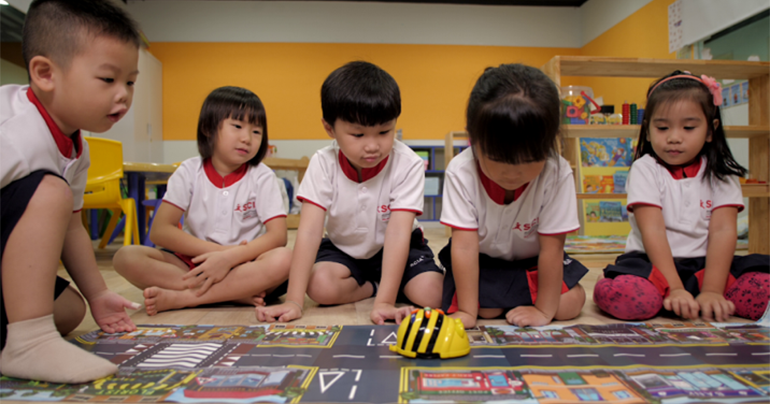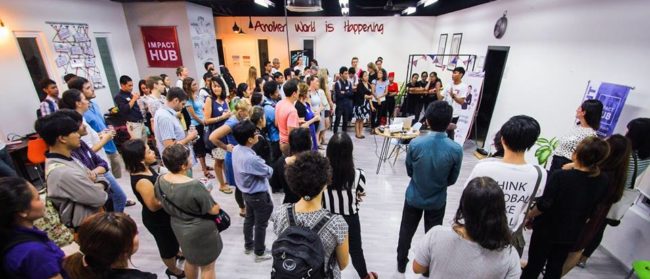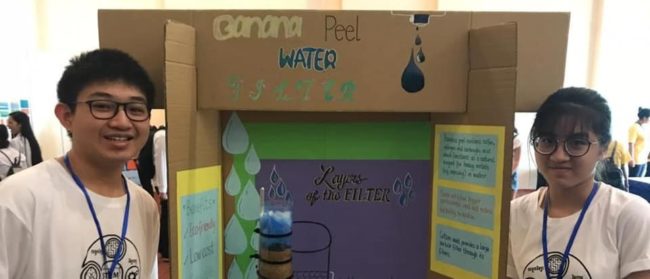The Singapore (Cambodia) International Academy (SCIA) STEM programme aspires to inculcate an applied approach to learning: to teach their students to think rather than be told what to think. No inquiry is rendered too small nor insignificant thus making SCIA’s practical and hands-on approach to their STEM programme a unique learning experience in Asia. For more information about SCIA’s STEM programme, submit your questions here.

Children are the future of our tomorrow. And it is vital they be geared for a future they can shape using applied knowledge as their weapon of choice. It wasn’t too long ago that subjects such as science and technology were only offered from a certain grade onwards. However, children are inquisitive and natural explorers. They are wide eyed wonderers about the world and everything that takes place around them. Call it innocence, but the cognitive senses of pushing them to always question how and why something works the way it does must be fostered and encouraged.
A curriculum based on Science, Technology, Engineering and Mathematics, or STEM, was first introduced in 2001 by scientific administrators at the US National Science Foundation to refer to careers in those disciplines. The environment today is driven by technology and science and there is an increasing need for a deeper understanding in these disciplines. This is the driving force behind SCIA’s signature STEM programme. Beginning from pre-school to grade 12, the STEM programme at SCIA is designed to appeal to the curiosity of children.
SCIA’s STEM Programme
 SCIA’s science curriculum has been structured to nurture the learners and develop their own sense of inquiry. It is based on the 5E model of inquiry-based approach: Engage, Explore, Explain, Elaborate and Evaluate. From pre-school, SCIA teachers cover each stage in a systematic manner, providing the student(s) with the tools to be scientifically literate, and promote cognitive usage of processing skills. During the course of the school year, students will be immersed in a practical approach to science through various experiments in the areas of biology, chemistry and physics. An example taught in class was using common goods and materials such as soft drink cans, cough drops and lemons to create devices. High School students participated in the eco bricks project where they created reusable building blocks made by packing clean and dry used plastic into a plastic bottle to a set density. Through active involvement in the process, SCIA students are guided to synthesise theoretical knowledge with real-world phenomena.
SCIA’s science curriculum has been structured to nurture the learners and develop their own sense of inquiry. It is based on the 5E model of inquiry-based approach: Engage, Explore, Explain, Elaborate and Evaluate. From pre-school, SCIA teachers cover each stage in a systematic manner, providing the student(s) with the tools to be scientifically literate, and promote cognitive usage of processing skills. During the course of the school year, students will be immersed in a practical approach to science through various experiments in the areas of biology, chemistry and physics. An example taught in class was using common goods and materials such as soft drink cans, cough drops and lemons to create devices. High School students participated in the eco bricks project where they created reusable building blocks made by packing clean and dry used plastic into a plastic bottle to a set density. Through active involvement in the process, SCIA students are guided to synthesise theoretical knowledge with real-world phenomena.
Technology and engineering education also begins as early as pre-school. Young learners gain familiarity operating everyday equipment to gain valuable life skills and gain deeper insight into technological objects, construction and engineering. SCIA Pre-school engages the Bee Bot, a robot that teaches young learners the fundamentals of computational thinking. Students apply simple coding to execute instructions to the Bee Bot to go from one place to another.

At SCIA, mathematical problem solving is central to mathematics learning. It involves the acquisition and application of mathematics concepts and skills in a wide range of situations, including non-routine, open-ended and real-world problems. The development of mathematical problem-solving ability is dependent on five inter-related components, namely, Concepts, Skills, Processes, Attitudes and Metacognition. Students learn to solve mathematical problems using the bar method, an activity that helps the students to visualise the mathematical problems.
For students that require extra attention, SCIA offers enrichment after school classes with the aim to provide additional grounding, coaching and support for academic success.
SCIA STEM Discovery Trail Event
To bring forth greater awareness on STEM, SCIA will host a 2-day STEM event “SCIA STEM Discovery Trail” on the 23rd and 24th of February, 2019. The event will showcase a series of STEM experiments and lab workshops, allowing both parents and students of all levels to be involved. With the STEM Discovery Trail, SCIA aims to create a public awareness of their signature STEM programme, showcase their vibrant facilities catering to the respective disciplines, and deepen public awareness of their education offerings.

SCIA’s philosophy for STEM education is simple yet unique. By amalgamating theory with experiential learning using real-world contexts, learning not only becomes educational but also unforgettable.
Read more and Discover the SCIA Education Experience here.


